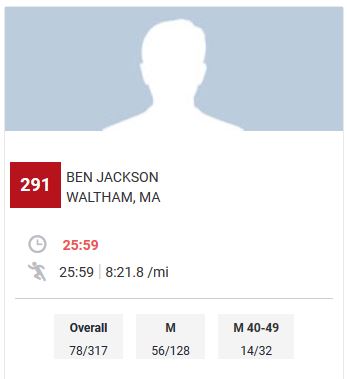After doing some races, my running has fallen off a bit. So, it is time to start back up again.
For the time being, I am adopting a new training program. I have decided to use Philip Maffetone’s Maximum Aerobic Function approach. The training part essentially works by taking 180 – your age to determine your heart zone for maximum aerobic function.
The idea is that you run at that heart rate and try to slowly go faster without exceeding your target zone. For example, if you are 30, then your MAF heart rate would be 150, and your training range would be 140 to 150.
This is the high level, and it comes from Maffetone’s book: The Big Book of Endurance Training and Racing. The book is aimed at marathoners and triathletes, and discourages cross training in things like calisthenics and weightlifting, both of which I like to include.
The other thing is that the book does not prescribe any particular training schedule or regimen. The plan seems to be run at or just below your maximum heart rate for whatever training time or program that you normally do. The goal is that you gradually get faster at a lower heart rate.
For now, my experiment will be to run three times a week in my hear rate zone for about half an hour with a goal towards lowering my 5K times. I will plan to continue to add some cross training.
One of the reasons that I think this might be a good method is that I have turned in some good times on 5Ks when I was not doing much running. I was, however, fencing, and that gave me time in a good cardio zone.
My last race was on April 30, and my time was 26:14. Before that I ran another race on April 9, and my results were as follows.

So, my times were reasonable. Now, I am trying this approach to run training. If I understand the rationale correctly, the goal is to train the body to burn fat rather than sugar, which leads to more endurance. The question is how effective this will be for shorter races as opposed to the longer ones Maffetone has trained athletes for in the past.
Over time, though, I should see my race times come down. Apparently exceeding the MAF heart rate during a race is okay.
The other thing I notice is that 180 minus your age is similar to what a lot of heart rate zone training regimens call the “fat burn” zone based on a max heart rate of 220. Additionally, the American Heart Association recommends working out at 50-85% of a maximum heart rate determined by 220 – your age. So, for a 30-year-old, a target rate based on 80% of the maximum would be: 220-30=190, and 190 X 80% = 152 BPM.
So the range is about the same. Running slower is more difficult, though I find I can finish three miles in about 30 minutes. I still need to identify my next 5K, but I figure I should have some sense of whether or not this is working in the next month or so. That will determine whether or not I stick with it.
If you have done this method of training, I’d love to hear about your experiences.

A very interesting article. I am a massive fan of heart rate training and have been using an approach to only workout within my aerobic training zone for the past 6 months. The reasons for this is that I am a long distance triathlete and indeed have been looking to get my body to utilise fat as an energy source rather than relying soley on carbohydrates.
I will say that running slowly can be frustrating to start with, but I have found great benefits. My run speed increased significantly over the first 3 months of training (around 1km/h each month) but the increase has tapered off a little since. The secret I have found is to ensure that your oxygen/carbon dioxide balance is not in oxygen debt.
I would say however that this may not be the best way (in my opinion) of training for a 5km race. If you look at the dynamics of a 5km race, you will undoubtedly be running at a higher HR than aerobic (although you will be using your aerobic energy system). Therefore I would recommend that for base training you utilse the aerobic running style, but then once you are happy with your base set start incorporating some threshold work into your training. This will give you a more realistic training session when comparing to your 5km running HR.
Hope your training goes well and heres to a new PB
Rob 🙂
LikeLiked by 1 person
Thanks, Rob for your comment. You advice on the 5k addresses something that I have been wondering about, since the 5k is so much shorter. I will keep your advice in mind as my base develops. Good luck in your races as well!
LikeLike
Pingback: Races — Something Went Wrong at the YMCA 5K! | Five K Runner: Going the (Short) Distance